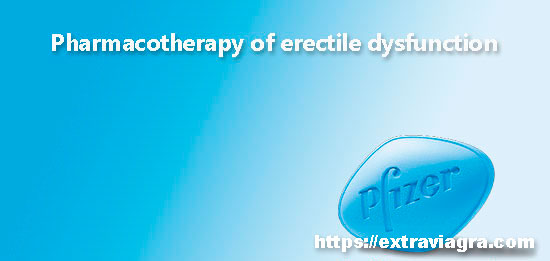Pharmacotherapy of erectile dysfunction: Erectile disorders are often the cause of reactive states, lead to loss of interest in life and even suicidal attempts, socially maladapt the personality. In 30-70% of cases, erectile dysfunction is the cause of depression.
Erectile disorders are not just a male problem. The “side effects” of this condition are also reflected in sexual partners. Among the women surveyed whose partners had erectile disorders, 60% reported a decrease in interest in sex compared to 29% of those with partners who did not have erectile disorders, 44% had problems with lubrication compared to 11% whose husbands did not have sexual problems, and 52% reported difficulties in achieving orgasm compared to 20% of women with partners without any sexual disorders.
The relevance of the problem of erectile disorders is undoubtedly related to the prevalence of this condition, which is clearly demonstrated by epidemiological and social studies conducted around the world.
50% of men worldwide over the age of 40 suffer from erectile disorders of varying severity: 30 million men in the United States, 31 million in Europe, 7-8 million in Russia, although the data is very understated. By 2025, the WHO predicts that 900 million men will suffer from erectile dysfunction. The largest increase is expected in developed countries, large industrial centers.
Back in 1940, Stekel wrote, warning that “impotence is a disease associated with modern civilization”, and the famous psychiatrist Ouden described our century as “an era of anxiety”. The widespread and steady growth of erectile disorders in the population has led the WHO to classify erectile dysfunction (ED) as one of the most important problems of our time. Moreover, in 2000, the WHO set of documents legally spelled out the “fundamental rights of citizens to sexual health”.
The progressive growth of erectile disorders is primarily due to the demographic situation in developed countries – the global aging of humanity, the increase in life expectancy in Europe and North America. Someone solves the problem with an erection with the help of Viagra, someone is not treated at all.
Also, the key points of this process are the growth rates of risk factors, the main of which are cardiovascular diseases and diabetes mellitus. According to a number of researchers, a steady increase by 2025. ED of up to 900 million people will be associated with a similar increase in the incidence of diabetes. The increase in the frequency of ED is also associated with population growth, mainly due to third world countries. The socio-economic factor is also key.
Trends in the growth of erectile disorders vary in different countries of the world, which is explained by the peculiarities of national and cultural traditions, the degree of development of the information base and a number of other factors.
Pharmacotherapy of erectile dysfunction: Therapy
Modern oral therapy is more than 40 years old. Pharmaceuticals differ in the target point and are divided into drugs of central and peripheral action. The mechanisms of action of non-hormonal drugs are different and are based on the blockade of a-adrenergic receptors (phentolamine, iohimbine), serotonergic receptors (trazodone), stimulation of dopaminergic receptors (apomorphine) and blockade of phosphodiesterases (Viagra, Levitra, Cialis). These groups of drugs can be used as a course of monotherapy or for the purpose of sexual adaptation (pharmacoprosthesis).

Despite the certain effectiveness of central-acting drugs, the prevalence of side effects over therapeutic, as well as the systemic effect at the central nervous system level, in our opinion, are a limiting factor for the widespread use of this group of drugs in the correction of ED.
The accumulated clinical experience currently allows specialists to take a more detailed approach not only to solving the problem of erectile disorders, but also to qualitatively change the sexual life of the patient as a whole, taking into account his needs and desires.